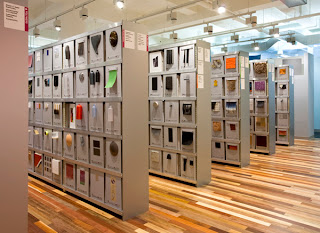 |
| Lifted from Material ConneXion website |
 |
| from Amazing Dat |
So Andrew said we need to focus on using nature, rather than copying it and gave an example of clothes made from tea and bacteria. These kind of products are biodegradable and sustainable by default.
I also appreciated how he talked about how his person friends are mostly artists. I agree with his approach that science and art need to combine to create future designs and products. It reminds me of the STEAM (science, technology, engineering, arts, and math) movement in schools that recognizes that STEM needs the arts embedded into it to solve the world's challenges.
Nathan Waterhouse gave me my biggest takeaway moment. He told the story of how NASA science in the 60's was both a collaboration and competition at the same time. Five teams of scientists worked in the same large building on their designs in competition with each other. But they also shared their progress with each other and could see each others' work. They could talk to each other, see each others' products, and copy if they wanted to. This is the method that allowed the U.S. to conquer the moon in only a decade.
At my school we are always talking about collaboration as a skill that we want students to develop. But Nathan has me thinking that we can have both collaboration and competition going on at the same time. When you combine that concept with gaming in schools (from Bill Sabram's talk) I am really fascinated by what kind of classroom structure for learning could be created. I will be reading some James Paul Gee this summer and trying to wrap my mind around how to combine standards based assessment and problem based learning with a social studies class designed as a game. I also want to make learning student-centered with lots of choices for them so they are intrinsically motivated.
My early thoughts are to have students create their own versions of "choose your own adventures" where instead of just turning to a different page in a book, they may have to research and master a topic, watch an on-line video, or ask and solve historical problems from primary sources. Students could work their way through post WWII America and try to pass an equal rights amendment or peacefully end the Cold War. Then students could play each others' simulations and critique and evaluate them. The best ones could be shared with other schools as winners of the competition
